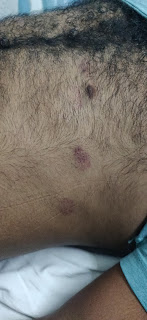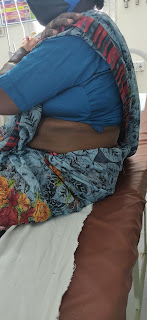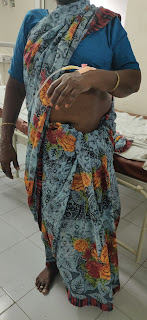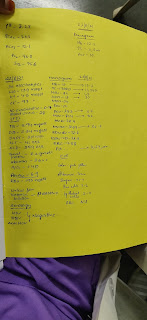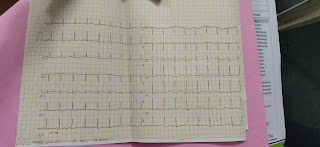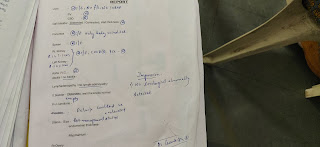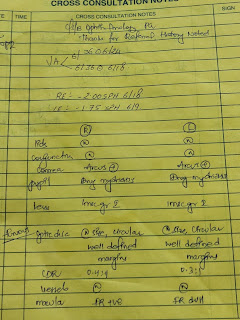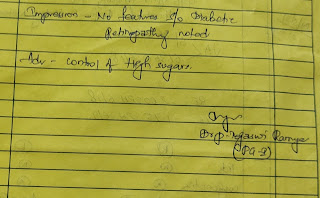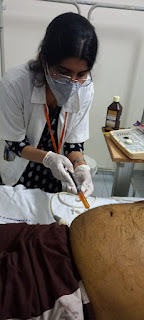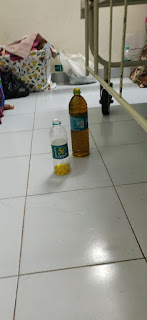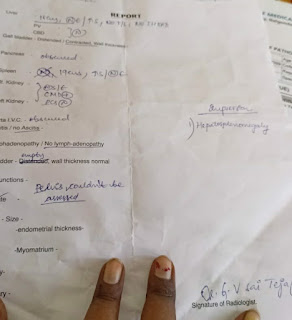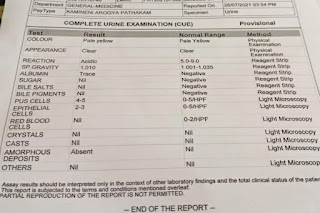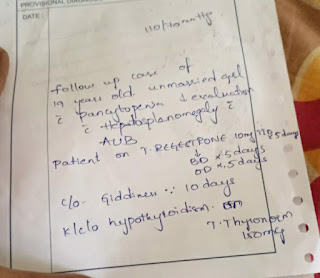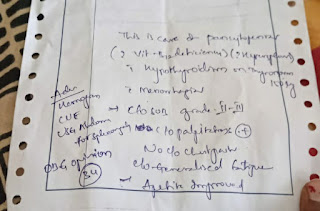36 M came with the c/o decreasing platelets.
Bank worker for Nalgonda, had a h/o fever with chills on Friday which resolved on taking mediciation after he was hospitalised on Monday, until yesterday evening.
He had no h/o SOB, Vomitings, Blood in stools.
On serial observation of his blood count, there was a significant decrease from 1.6 L (Saturday) to 26000 (yesterday afternoon).
No h/o any surface / visceral bleeding manifestations.
Since yesterday, his wife gives history of abdominal distension. Patient complains of SOB after taking food and fluids.
Patient gives history of ?greenish-dark coloured stools.
Serial Platelet Count since Saturday
Saturday - 1.6L
Monday - 99k
Tues - 30k
Wednesday (Afternoon) - 26k
No past medical history.
Appetite - Normal
Diet - mixed
Sleep - Normal now, but could not sleep in the first 4 days of fever. So, on monday was administered ?sleeping pills (as per his wife)
Bowel and Bladder - Regular and passed greenish-dark stools
General Examination -
NO pallor/ Icyerus/ Cyanosis/ lymphadenopathy/ Clubbing
Vitals at Presentation
Temp Afebrile
BP 110/80
PR 75 / min
RR 15 / min
GRBS 121
GCS 15/15
Spo2 98% on RA
Resp - BAE + , NVBS
CVS - S1 S2 heard
Per Abd - soft, non tender
CNS - NFND
Provisional Diagnosis - ? Viral Pyrexia with Thrombocytopenia
Examintion Day 1 @ 8 A.M
Subjective -
1. Abdominal Distension since yesterday
2. Reddish Spots on his chest
3. Mild SOB on consuming food and liquids
Objective -
BP 110/80 (All same in supine, standing for 2 minute and 3 minutes)
PR 60
Temp - 99.6
Platelets - 40,000
CVS - S1 S2 Heard
Resp - BAE + , NVBS
CNS - NFND
P/A - Diffuse Tenderness + , Fluid Thrill +, Bowel sounds +
Day 3
SOAP NOTES
SUBJECTIVE : No fever spikes
OBJECTIVE :
BP - 110/70 MM OF HG(SUPINE) , 100/70 (Standing 1 min and 3 min)
PR 80 BPM
Temp - 98.6
CVS - S1 S2 Heard
Rsp - BAE + , NVBS
CNS - NFND
PA - Soft, non tender
ASSESSMENT :
VIRAL PYREXIA WITH THROMBOCYTOPENIA (DENGUE NS 1 NON REACTIVE) with Platelet count 41,000
Plan :
1. IVF 1 UNIT NS, RK @ 100 ML/HR
2. TAB. DOLO 650 MG /PO/TID
3. INJ NEOMOL 1 GM IV/SOS IF TEMP >101 F
4. TEMP CHARTING 2 HRLY AMD TEPID SPONGING
5. VITALS MONITORING 5 HRLY
6. INJ PAN 40 MG/IV/OD
7. TAB DOXY 100 MG /IV /OD
8. ZYTE GEL
9. WATCH FOR BLEEDING MANIFESTATIONS AND POSTURAL HYPOTENSION
